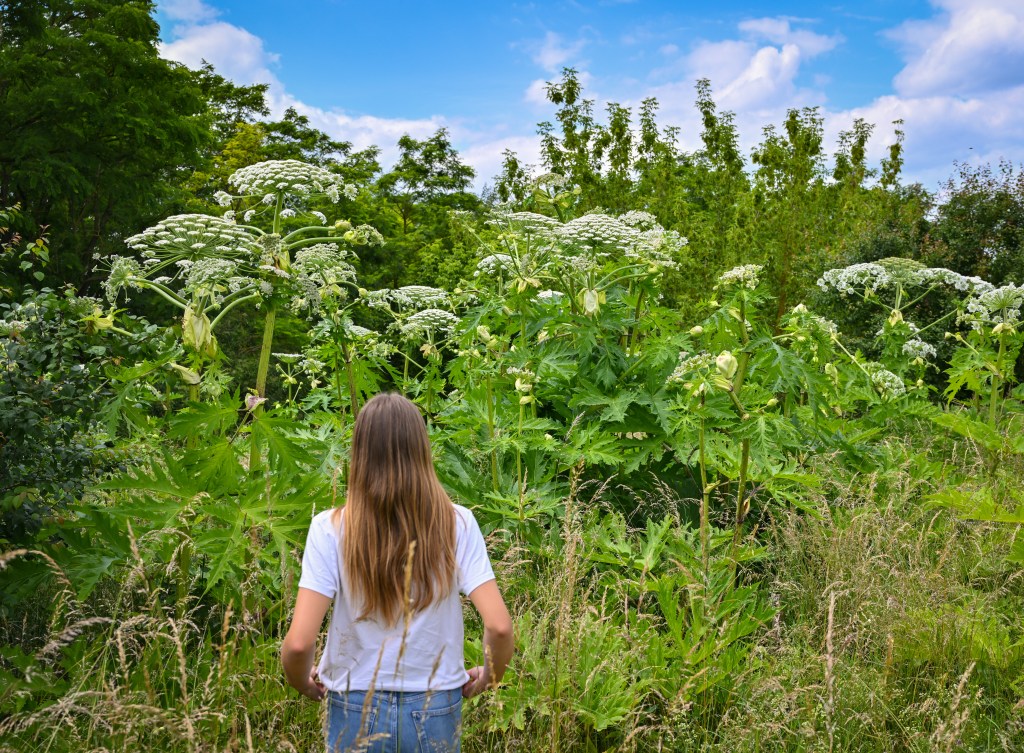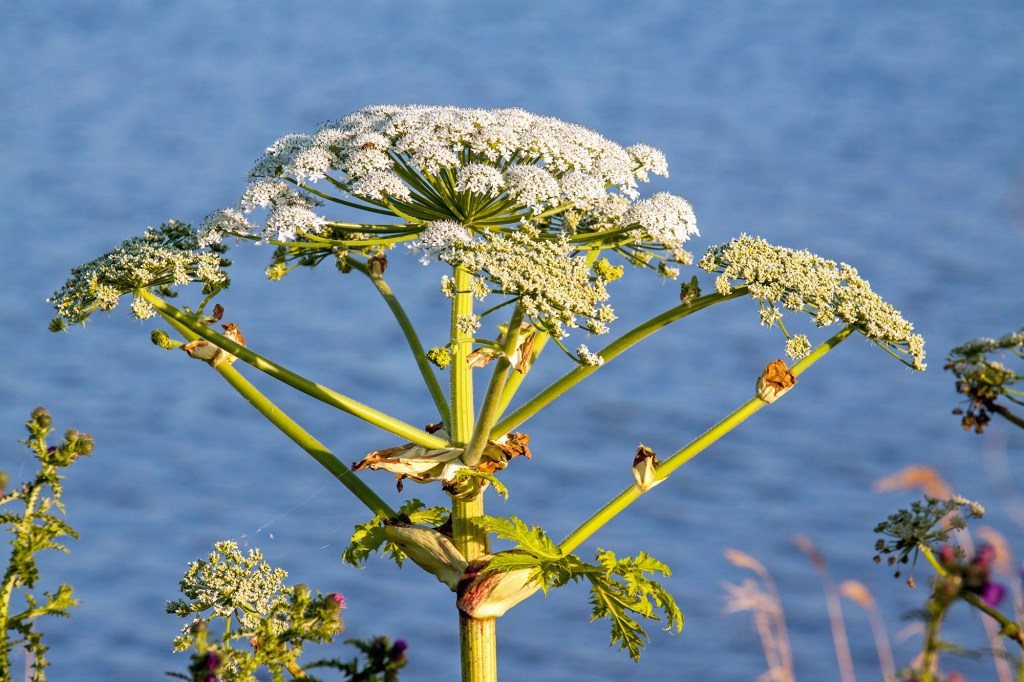Giant Hogweed may look like an innocent, beautiful flower, but this unassuming plant is actually a ticking time bomb in our backyards. Packed with a sap that can cause horrific, long-lasting burns, this invasive species from the Caucasus Mountains has become a menace across New York state and beyond. From third-degree blisters to potential blindness, the dangers of Giant Hogweed are very real and very serious.

Giant Hogweed’s sap contains chemicals called furanocoumarins that make the skin incredibly sensitive to UV light. Even the slightest brush against the plant can trigger a reaction called phytophotodermatitis, causing the skin to burn, blister, and scar – sometimes for months or even years. In extreme cases, exposure can lead to permanent vision loss. This noxious weed is no joke, and its effects can be truly devastating.
Giant Hogweed has spread like wildfire across New York, with nearly 1,150 active sites identified by the state’s Department of Environmental Conservation. The plant is present in all but 9 of New York’s 62 counties, and dozens of sites are infested with over 400 individual plants each. Unsuspecting gardeners and landscapers have unknowingly helped fuel this botanical nightmare by purchasing and planting Giant Hogweed, unaware of its dangers.
Patryck Jones learned the hard way just how dangerous Giant Hogweed can be. While clearing brush around his church in Syracuse, the 33-year-old assistant pastor used a weed whacker to take down the towering stalks, not realizing their sap would come spraying out. Within 30 minutes, Jones began experiencing intense itching, burning, and blistering on his skin.

The reaction was so severe that it even triggered his Lyme disease, and the rash took over a month to fully subside – leaving behind permanent scarring. Jones’ story is a chilling reminder of the very real threats posed by this unassuming plant. The New York Department of Environmental Conservation has been working tirelessly to eliminate Giant Hogweed sites across the state since launching a control program in 2008.

However, with each plant capable of producing up to 100,000 seeds, this is an uphill battle. Experts warn that the easiest way to avoid exposure is simply to steer clear of Giant Hogweed altogether, as even cutting the stalks can cause the dangerous sap to spray everywhere. Reporting any suspected sightings to authorities is crucial to help curb the spread of this toxic terror.

Giant Hogweed may look like an innocent flower, but it is anything but harmless. This invasive plant from the Caucasus Mountains has become a true threat in New York, capable of inflicting horrific, long-lasting burns and even potentially blinding those who come into contact with its sap. While authorities are working to eliminate Giant Hogweed, the public must remain vigilant and report any suspected sightings to keep this toxic terror from spreading further. One wrong move can lead to life-altering consequences – a sobering reality that everyone needs to understand about this botanical menace.


